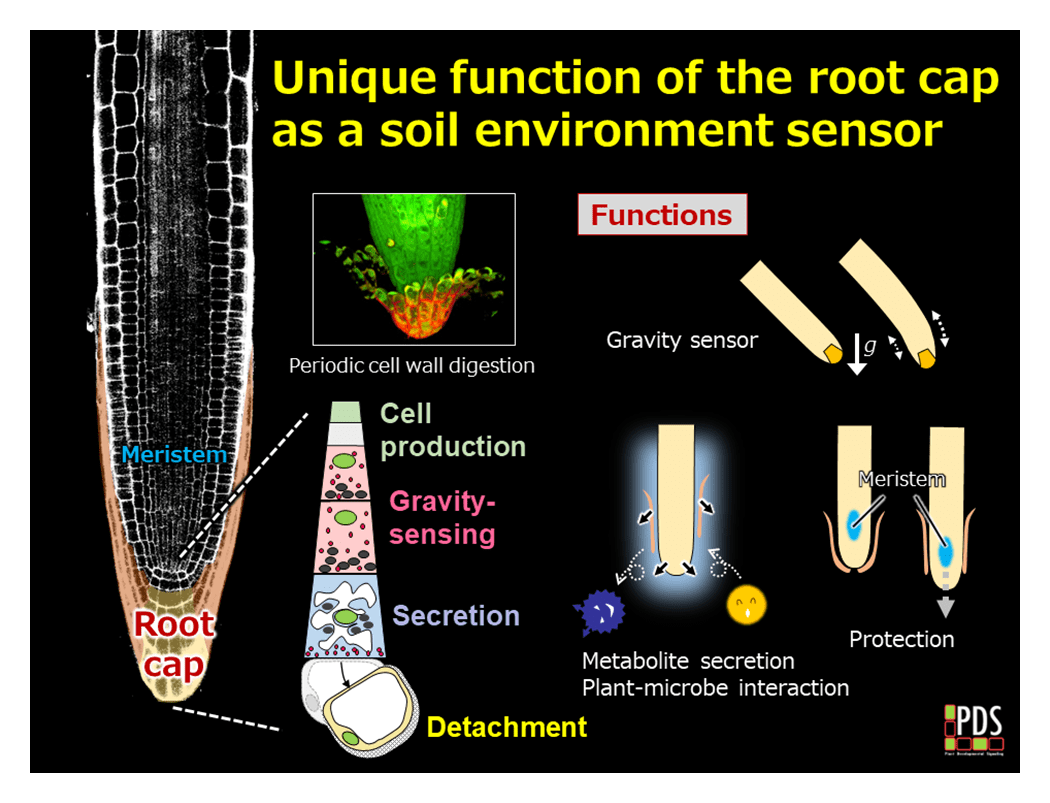Plant Developmental Signaling

- Professor
- NAKAJIMA Keiji

- Assistant Professor
- GOH Tatsuaki

- Labs HP
- https://bsw3.naist.jp/nakajima/English/English_top.html
Outline of Research and Education
Our laboratory is dedicated to studying the fundamental mechanisms that control plant growth and development. We use innovative imaging techniques to capture previously unseen developmental phenomena, such as the dynamics of cells and organelles within growing plants, as well as the expression dynamics of genes and proteins. By combining molecular genetics, genome-wide analysis, and techniques from mathematical and information sciences, we strive to explore pivotal questions in plant developmental biology.
Major Research Topics
Plant growth dynamics in response to environmental stimuli
Plants have evolved the ability to flexibly change their body and organ shapes in response to fluctuating environments. Because plants lack a central nervous system or musculoskeletal system, changing their organ shape and growth vector relies on the ability of each cell to act individually yet in a highly coordinated manner. How plants accomplish such a complex process is a great mystery. We are seeking to elucidate the mechanisms by which plant organs grow dynamically in changing environments using high-resolution live imaging combined with AI-based image analysis and mathematical modeling (Fig. 1).
Unique function of the root cap as a soil environment sensor
The root cap covers the root tip and thereby constitutes the front line between plants and the soil environment. Besides physically protecting the root meristem, the root cap plays an essential role to promote plant growth by gravity sensing, friction reduction, and perception of soil environments. The root cap features a unique property in that its constituent cells periodically turn over by concerted cell renewal at the innermost layer and autonomous cell detachment at the outermost layer. We are seeking to unravel the mechanisms underlying the periodic cell turnover and functional specialization of the root cap cells by using live imaging combined with omics analysis (Fig. 2).
Evolution of sexual reproduction systems in land plants
Sexual reproduction is a fundamental process to enhance genetic diversity in evolution. Elucidating the regulatory mechanisms of sexual reproduction is an important research topic to increase food production and energy security. Studying gamete differentiation, however, is difficult in conventional seed plant models. We use bryophyte models to overcome this problem and identified master regulators of sexual differentiation conserved in land plants. Using these regulators as a starting point, we are trying to elucidate the mechanism underlying gamete differentiation and fertilization in plants (Fig. 3).
References
- Koi et al., Curr. Biol., 26, 1775-1781, 2016
- Kamiya et al., Development, 143, 4063-4072, 2016
- Miyashima, Roszak, Sevilem et al., Nature, 565, 490-494, 2019
- Hisanaga, Okahashi et al., EMBO J., 38, e100240, 2019
- Hisanaga, Yamaoka, Kawashima et al., Nature Plants, 5, 663-669, 2019
- Fujiwara, Goh, Tsugawa et al., Development, 148, dev196253, 2021
- Hisanaga et al., eLife, 10, e57090, 2021
- Goh, Sakamoto et al., Development, 149, dev200593, 2022
- Fujiwara et al., Curr. Biol., 33, 886-898, 2023
- Cui et al., Plant Cell Physiol. 64, 866-879, 2023
- Goh, Song et al., Plant Cell Physiol. 64, 1262-1278, 2023

 NAIST Edge BIO
NAIST Edge BIO


